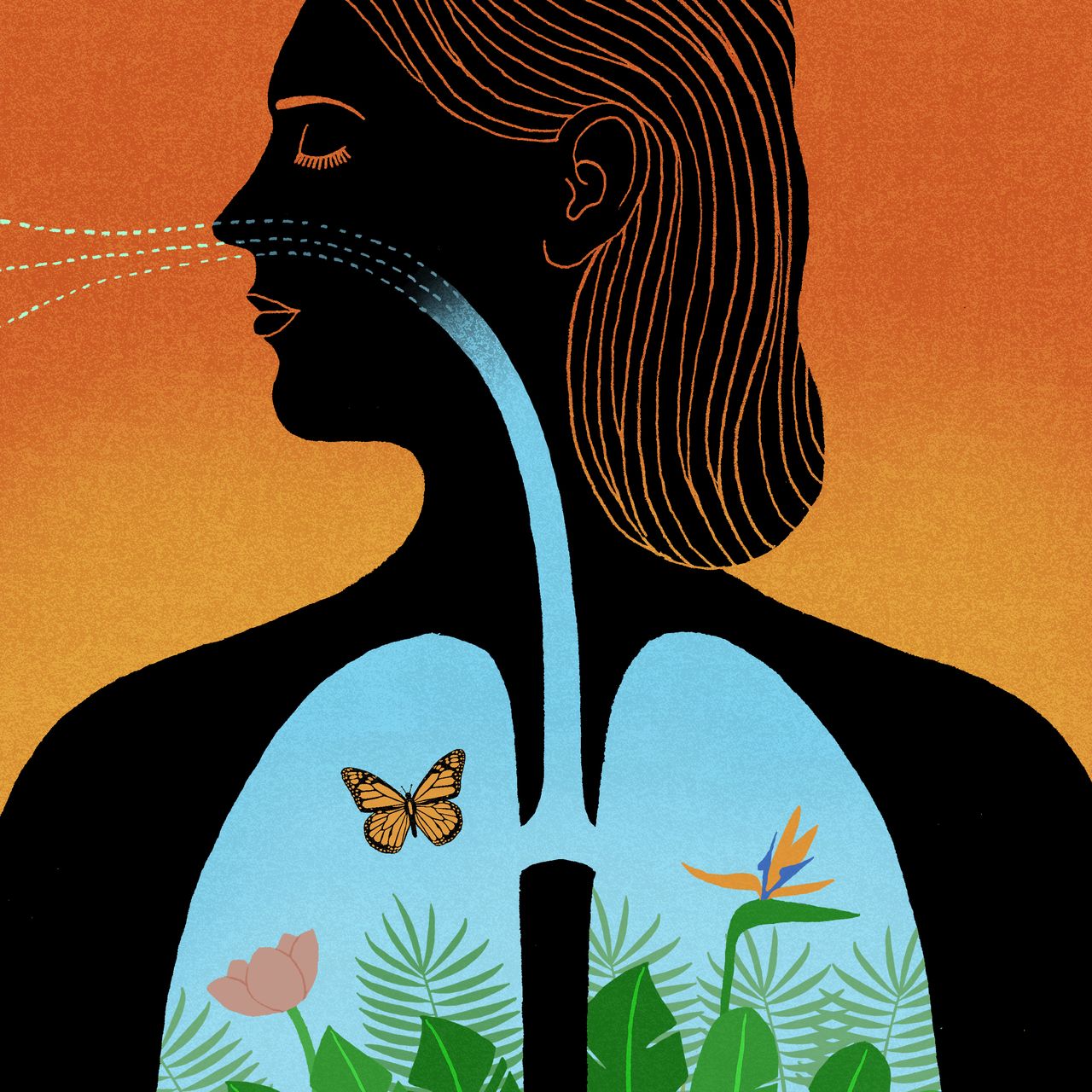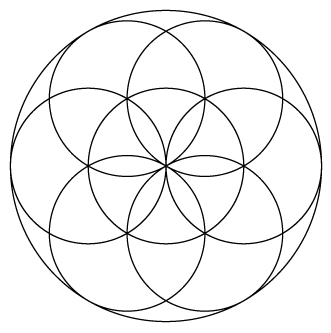Breath is Food for the Body and Soul
 How has your awareness of your breathing changed in this year of COVID? Perhaps some reactions to wearing masks, avoiding closed-in spaces, or being especially sensitive to any respiratory distress? With the pandemic dominating the world for an entire year, we are forced to the realization that we can’t take breathing for granted.
How has your awareness of your breathing changed in this year of COVID? Perhaps some reactions to wearing masks, avoiding closed-in spaces, or being especially sensitive to any respiratory distress? With the pandemic dominating the world for an entire year, we are forced to the realization that we can’t take breathing for granted.
Each day we breathe about 25,000 times, and in our lifetime, that number might be 670 million. The body is programed to keep the breath going, and for much of the time we don’t think about it. But how we breathe is in our control, and is worth noticing and improving. Yogis know this, and it is the basis of pranayama practice. Dancers and athletes know this, and have developed strategies to improve and sustain enough breath for their energy output.
I’ve recently read Breath, by journalist James Nestor. His book condenses the story of his ten-year journey of exploration and research into breathing, fueled by the need to improve his health. He offers readers a wealth of evolutionary history, physiology, and cultural /spiritual traditions relating to breathing, all told in a conversational, easy-to-read tone. He travels the world, meeting what he calls “pulmonauts”, people from all walks of life who study breathing. In a nutshell (sorry, James) the message is: breathe slowly, exhaling fully, through your nose not your mouth as much as possible. This is definitely something I learned as a dancer many decades ago – it really helps to sustain energy and mental calm.
The word “Prana” is usually translated as “life force”, and it is the subtle energy that permeates, animates and sustains the body from our time in the womb until the moment we die. We are born with it, and we can nurture and expand it, or not. The suffix “ayama” means to regulate, extend, enhance the prana. Prana flows through nadis, which are subtle channels throughout the body, comparable to the meridians in Traditional Chinese Medicine. The practice of yoga asana loosens the body to create a more receptive “field” for the flow of Prana.
Pranayama practice doesn’t just help your breathing; it helps to stabilize your blood pressure, enhance heart rate variability, and calm the mind. If fact, one of my teachers said: “Asana changes your body, pranayama changes your personality.” Doesn’t that sound like a worthwhile pursuit?
Did you know?….
– The root words for “spirit” and “breath “are the same in many languages.
– In the upper lungs there is a predominance of nerves that prepare you for alert action (the sympathetic nervous system). In the lower lungs, the predominant nerves are those that bring calmness and relaxation (the parasympathetic nervous system). Therefore, we can regulate our mood and energy level by the way we fill our lungs. When we chest breathe, we rev up. When we allow the belly to expand so that the lower lungs can fill, we calm down.
– The nostrils take turns being dominant. It’s called nasal cycles, and each period of dominance can last anywhere from 20 minutes to 4 hours. Breathing through the right nostril, the “sun” channel, is stimulating. Breathing through the left nostril, the “moon” channel, is calming.
Here are some tips and basic techniques, if you’ve never practiced pranayama, or want to revive your practice:
General tips:
For all techniques, a few moments of basic breath awareness is a good preparation. Allow the breath to become slower, deeper, and more steady on its own. Observe the rhythm, texture and all sensations associated with the movement of the breath. Feel how the breath nourishes you.
Keep your eyes soft and feel the three-dimensional shape of your lungs, which fill the rib cage from top to bottom and side to side. We often don’t feel the back part. If any anxiety arises, stop doing the technique and breathe normally until you feel calm, then resume.
Basic Techniques:
1. The 3-directions breath
It’s in four parts, and increases the elasticity of the ribs, breathing muscles, and lungs.
a. Picture your lungs filling from top to bottom with each inhalation. Exhale normally.
b. Picture your lungs filling from front to back with each inhalation. Exhale normally.
c. Picture your lungs filling from side to side with each inhalation. Exhale normally.
d. Picture your lungs filling in all directions at once.
2. Ujjayi = “upward moving and victorious”, can be done in any position
Ujjayi is characterized by the soft whisper-like sound made on both inhalation and exhalation. It’s often called the “ocean breath” or the “Darth Vader breath”.
Preparation:
Breathe slowly with your mouth closed, making a soft humming sound on your exhalation. The sound allows you to become more aware of the flow of the breath, and gradually bring it to a steady rhythm. Notice the slight constriction of your upper throat and the back of your tongue as you hum. Now, instead of a voiced hum, shift to a whisper, and make the sound on both the inhale and exhale. Another way to find the whisper sound is to open your mouth and pretend you are using your breath to fog your glasses to clean them. Then close your lips and continue into Ujjayi. Breathe in and out through your nose, making the soft ocean-like sound. Observe and feel the sound, and make it subtle, soft, continuous and smooth.
3. Kapalabhati = “shining the skull”, a cleansing technique for the central pranic channel, the Sushumna Nadi. The essence of this one is a series of quick, forceful exhalations through your nose, alternating with normal, automatic inhalations. It’s best done sitting, not lying down.
Preparation: Practice the abdominal action of quick contractions of your lower abdominal muscles, which will push the air out of your lungs and nose. Do not contract the upper abdominals or tighten the ribs, and avoid any tension or extraneous movements of your spine, shoulders or neck. Clear your nose. Sit tall with strength in your spine, shoulders and tongue relaxed. Now begin a series of 8-10 short, forceful exhalations and normal automatic inhalations. Keep the pace slow at first. Then take a few normal breaths. Repeat the process, increasing the speed and number of “puffs” as you are ready. If your face, neck, throat, shoulders, or ribs become tight or your rhythm becomes jagged, stop and rest. I recommend three rounds at first, then increase the number of puffs in each round or number of rounds as you are ready.
Note: it is common for people learning this for the first time to feel light-headed
afterward.
4. Nadi Shodhana = “cleansing of the nadis”, especially the ones that spiral around the Sushumna Nadi, the Ida and the Pingala. It’s also best done sitting. Alternating nostril breathing uses the fingers to regulate the nostrils, called “digital pranayama”.
Ida: the nadi on the left side, is associated with the parasympathetic nervous system and the
moon energy: cooling and calming.
Pingala: the nadi on the right side, is associated with the sympathetic nervous system, and
energizing and activating.
Preparation: Without coordinating the breath, practice the hand position and the action of gently closing one nostril at a time. The touch is soft and delicate, and does not compress the nose or turn it to the side.
Classic hand position: Right hand: index and second finger curl to touch the base of the thumb. Pinky and fourth finger touch the left nostril, thumb touches the right nostril.
Alternate hand position: Index and second finger touch the space between your eyebrows, otherwise the same as above.
Do one round of basic Ujjayi breath. Then close the right nostril gently and inhale through the left. At the top of the inhale, close the left nostril and exhale through the right. At the end of the exhalation, inhale through the right nostril. At the top of the inhalation, close the right and exhale through the left. This is one round. Each time, you change nostrils at the top of the inhalation.
Repeat as many rounds as you wish. Keep the flow of the breath slow, smooth and steady. If agitation occurs, take a few natural breaths. Keep your spine long and tall, your shoulders released down, and your head facing straight forward. If your right arm gets tired, you can support it with your other hand, or take some resting breaths with your hand resting on your thigh. Try for five minutes of Nadi Shodhana.
I invite you to spend some time each day focusing on your breath. Watch how it feels and enjoy its benefits. Visit my Youtube channel for more instructional videos and please leave a comment below.

 At the end of a year, we can reflect on the passage of time, reviewing the events and growth of the past year and setting intentions for the next year. It’s a valuable time to renew values and goals, and to savor meaningful experiences. What did I enjoy this year? What do I want to do more or less of next year? What mistakes did I learn from? What obstacles did I overcome, and which ones are still ahead?
At the end of a year, we can reflect on the passage of time, reviewing the events and growth of the past year and setting intentions for the next year. It’s a valuable time to renew values and goals, and to savor meaningful experiences. What did I enjoy this year? What do I want to do more or less of next year? What mistakes did I learn from? What obstacles did I overcome, and which ones are still ahead?